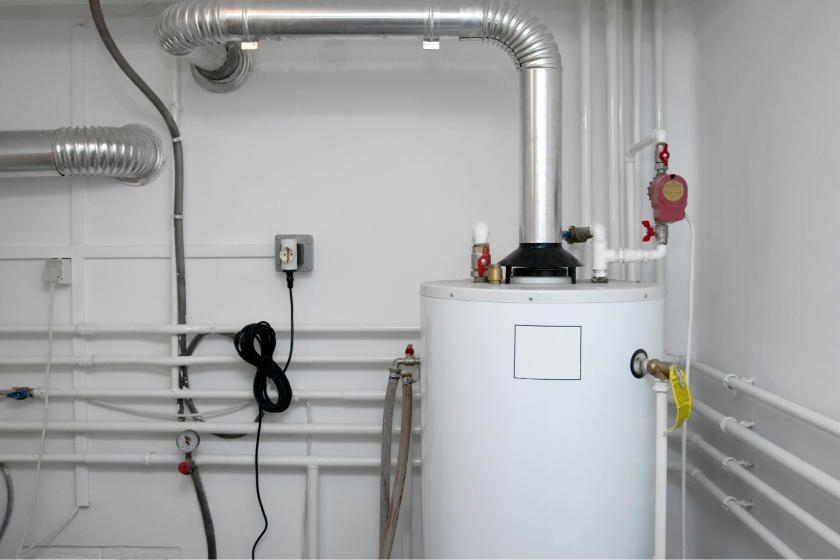Easy Methods to Maintain Your Home's Hot Water System Properly
Easy Methods to Maintain Your Home's Hot Water System Properly
Blog Article
What're your concepts on What Kind of Maintenance Do Water Heaters Need??

Hot water is important for daily convenience, whether it's for a rejuvenating shower or washing dishes. To guarantee your warm water system runs effectively and lasts longer, normal maintenance is key. This write-up supplies useful tips and understandings on exactly how to maintain your home's warm water system to prevent disruptions and pricey repair services.
Introduction
Keeping your home's warm water system might appear complicated, however with a few simple actions, you can ensure it runs smoothly for many years to come. This overview covers whatever from understanding your warm water system to DIY upkeep tips and recognizing when to hire specialist assistance.
Relevance of Keeping Your Warm Water System
Normal upkeep not only expands the lifespan of your hot water system but also ensures it runs effectively. Neglecting maintenance can lead to reduced effectiveness, greater energy expenses, and also early failure of the system.
Signs Your Warm Water System Needs Upkeep
Knowing when your warm water system requires attention can avoid major concerns. Watch out for indications such as irregular water temperature, unusual sounds from the heating unit, or corroded water.
Comprehending Your Hot Water System
Before diving right into upkeep tasks, it's helpful to recognize the fundamental elements of your warm water system. Generally, this consists of the hot water heater itself, pipes, anode rods, and temperature controls.
Month-to-month Maintenance Tasks
Regular monthly checks can help capture minor issues prior to they escalate.
Flushing the Water Heater
Purging your hot water heater gets rid of debris accumulation, boosting effectiveness and lengthening its life.
Monitoring and Replacing Anode Rods
Anode rods avoid rust inside the container. Evaluating and replacing them when worn out is vital.
Evaluating and Readjusting Temperature Level Settings
Adjusting the temperature level setups guarantees optimal performance and security.
DIY Tips for Upkeep
You can execute a number of maintenance jobs yourself to maintain your hot water system in leading condition.
Checking for Leaks
On a regular basis examine pipes and connections for leaks, as these can bring about water damages and higher expenses.
Examining Stress Relief Valves
Evaluating the pressure safety valve ensures it works appropriately and prevents extreme pressure accumulation.
Shielding Pipelines
Protecting hot water pipelines lowers warm loss and can save power.
When to Call a Professional
While do it yourself maintenance is helpful, some issues require expert expertise.
Complex Problems Calling For Specialist Aid
Instances consist of major leakages, electric issues, or if your water heater is consistently underperforming.
Regular Specialist Upkeep Advantages
Expert maintenance can include detailed assessments, tune-ups, and ensuring conformity with safety standards.
Final thought
Normal upkeep of your home's hot water system is vital for performance, durability, and expense financial savings. By complying with these suggestions and understanding when to seek specialist aid, you can make certain a reputable supply of warm water without unanticipated interruptions.
How to Maintain an Instant Hot Water Heater
Before tinkering with your hot water heater, make sure that it’s not powered on. You also have to turn off the main circuit breaker and shut off the main gas line to prevent accidents. Also turn off the water valves connected to your unit to prevent water from flowing into and out of the appliance. 2. When you’re done, you have to detach the purge valves’ caps. These look like the letter “T†and are situated on either side of the water valves. Doing so will release any pressure that has accumulated inside the valves while at the same time avoid hot water from shooting out and burning your skin. 3. When the purge valves’ caps are removed, you have to connect your hosing lines to the valves. Your unit should have come with three hoses but if it didn’t, you can purchase these things from any hardware or home repair shops. You can also get them from retail stores that sell water heating systems. Read the user’s manual and follow it to complete this task properly. When the hosing lines are connected, open the purge port’s valves. 4. You should never use harsh chemical cleaners or solutions when cleaning your unit. Make use of white vinegar instead. It should be undiluted and you’ll probably use about 2 gallons. 5. Now flush your water heater. This task should probably take about 40 minutes. We can’t give you specific directions for this because the procedure is carried out depending on the type, model and brand of your heater. With that being said, refer to the user’s manual. 6. When you’re done draining the unit, you have to turn off the purge port valves again. Remove the hosing lines that you earlier installed on each of the water valves. Put the valve caps (purge port) back in their respective places and be very careful so as not to damage the rubber discs that are found inside these caps. 7. Now that everything’s back in place, check your user’s manual again to find out how to reactivate your water heating system. 8. Once it is working, turn one of your hot water faucets on just to let air pass through the heater’s water supply pipes. Leave the tap on until water flows smoothly out of it. https://www.orrplumbing.com/blog/2014/september/how-to-maintain-an-instant-hot-water-heater/

Do you enjoy reading up on Tips on Maintaining a Water Heater? Make feedback down below. We'd be glad to find out your insights about this piece. Hoping that you visit us again in the future. Loved our content? Please quickly share it. Help others discover it. Thanks for taking the time to read it.
Click Here Report this page